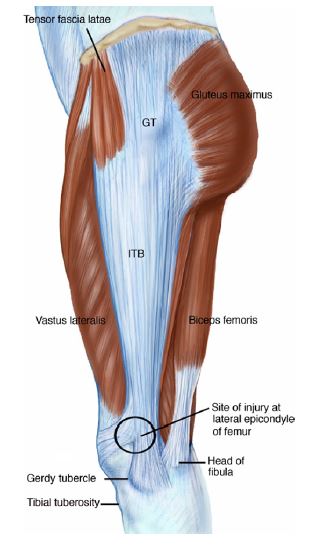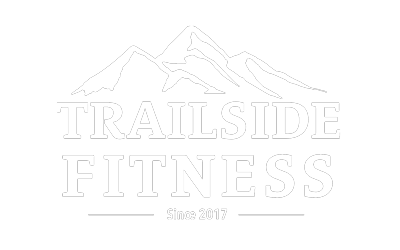IT Band Issues & Hiking
Are you having IT band issues? It’s common to hear runners and hikers talk about having IT band problems, but what exactly is the IT band, and why is it such a problem for so many hikers?
IT Band Anatomy For Hikers

Looking at the image, do you see that long and wide white band running down the leg, labeled lTB in the graphic? That is your IT band or Iliotibial band.
The IT band starts at the hip and ends below the knee with lots of muscles anchoring into it: glutes (gluteus maximus), quads (Vastus Lateralus), and the tensor fascia latae (TFL).
The muscles that tie into the IT band and missing motion in your hip cause many issues for hikers, like pain and discomfort. If the muscles are tight, they can create tension and compression over structures like the bursae. In addition, tightness and compression can cause pain in the hip and knee joints.
The muscles should be able to slide under and around the IT band, but often, with active people like hikers, that sliding ability diminishes, and the muscles adhere, for lack of a better word, to the IT band.
When the muscle adheres to the IT band, pain can develop. This process is typical of active and sedentary people and indicates that some maintenance is in order.
You are probably keen to change the oil in your car, change the filters, and keep air in the tires. It’s basic car maintenance. Your body is similar in that it also needs basic maintenance to keep it functioning smoothly.
With basic upkeep, using a lacrosse ball or foam roller can help restore the sliding surface and “unstick” the muscle from the IT band. This will decrease compression on bursae and ease pressure around the hip and knee joints.
Can I Stretch My IT Band Issues Away?
It’s a common misconception that you can stretch the IT band. The answer is no unless you can produce over 2200 lbs of force. And even if you could produce that level of force, you’d only stretch the IT band 1-2%. The bottom line is that the IT band isn’t supposed to be stretchy – it needs to be thick and robust to handle the forces placed upon it.
Foam rolling is popular and might be beneficial; however, it’s not pack-friendly. For hikers, carrying a cork ball is a great way to relieve common aches and pains. Consider keeping one in your arsenal!
Step Up Your Game
Dr. Starrett uses a lacrosse ball to target the muscles, areas around the knee, and the seam where the quads meet. It helps to “unstick” the tissue layers, allowing them to glide more freely with movement, which decreases tension and pain.
Watch the short video from Dr. Kelly Starrett; he describes the causes of IT band problems and follows up with some stretches and lacrosse ball work that can easily be done on the trail.
Of particular note to hikers is the Tensor Fascia Latae or TFL muscle; you can see it in the image above. It will be a workhorse during a hike as it helps to flex the hip – that happens with every step forward you take. This also means it is working quite hard as you hike uphill!
Spend some time after your training hikes and jogs targeting the muscles around the IT band. This will greatly benefit your recovery efforts and give you another tool for your toolbox of tricks if things flare up while on the trail.


Recent Comments